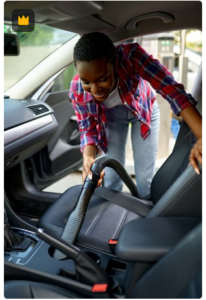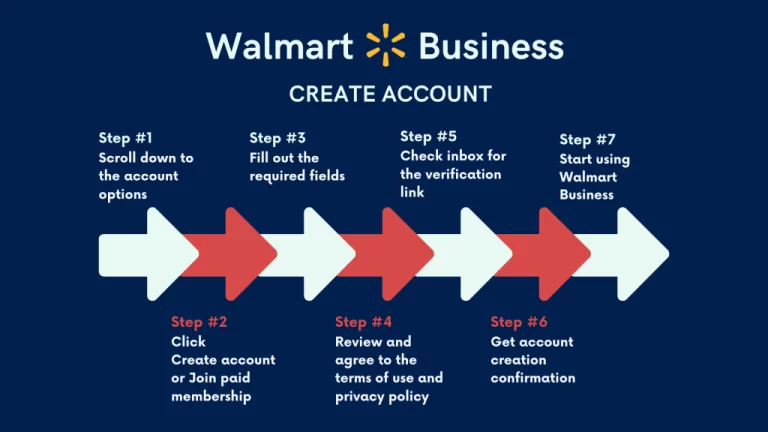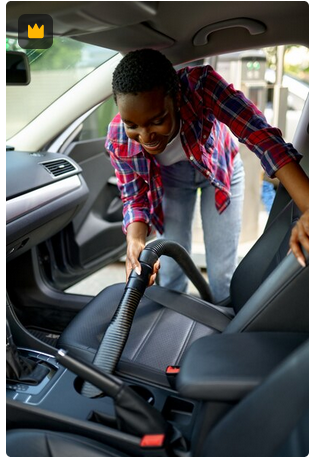The Road to Serenity: Tips for Avoiding Car Accidents Caused by Road Rage
Driving can be a stressful experience, especially when you’re surrounded by aggressive drivers. Road rage is a growing problem that can lead to serious car accidents. When someone is driving while angry or agitated, they become a danger to themselves and everyone around them. In this blog post, we’ll share some tips on how to avoid car accidents caused by road rage. We’ll cover everything from identifying aggressive driving behaviors to staying calm in stressful situations. With these tips, you’ll be on the road to serenity and able to navigate even the most hectic driving scenarios with confidence and ease. So buckle up and read on for a safer, more peaceful driving experience.
1. Understanding the dangers of road rage
Road rage is a growing concern on our roads today and understanding its dangers is crucial for all drivers. It refers to aggressive or violent behavior exhibited by drivers in response to traffic situations or the actions of other drivers. This type of behavior can range from honking angrily, tailgating, yelling, making offensive gestures, to even physical confrontations.
The dangers of road rage cannot be overstated. It not only puts the driver engaging in aggressive behavior at risk but also endangers the lives of everyone else on the road. When drivers allow their emotions to take control behind the wheel, their ability to make rational decisions and react appropriately diminishes significantly. This increases the likelihood of accidents and can result in severe injuries or even fatalities.
Additionally, road rage can escalate quickly. What may start as a minor disagreement on the road can quickly escalate into a dangerous situation where both drivers are engaging in aggressive and reckless behavior. This increases the chances of crashes, collisions, and even intentional harm.
Furthermore, road rage can have long-lasting psychological effects on both the aggressor and the victim. The stress and anxiety caused by these confrontations can lead to increased aggression, anxiety disorders, and even post-traumatic stress disorder (PTSD).
To ensure our own safety and the safety of others on the road, it is crucial to recognize and understand the dangers of road rage. By staying calm, practicing patience, and avoiding aggressive behaviors, we can contribute to a safer driving environment and reduce the risk of accidents caused by road rage. Remember, it’s better to arrive at your destination a few minutes late than to put lives at risk due to uncontrollable anger on the road.
2. Recognizing the signs of road rage in yourself and others
Recognizing the signs of road rage, both in yourself and others, is crucial for avoiding car accidents and maintaining a calm and safe driving environment. It’s not uncommon to experience frustration while driving, but it’s important to be mindful of how that frustration can escalate into road rage.
In yourself, signs of road rage may include excessive honking, aggressive gestures, yelling or shouting, tailgating, or weaving in and out of traffic. These behaviors can not only put you at risk but also increase tension on the road, potentially leading to dangerous situations.
When it comes to recognizing road rage in others, it’s important to be observant and cautious. Some signs to look out for include aggressive driving maneuvers, speeding, cutting off other drivers, flashing headlights, or engaging in verbal altercations with other motorists. It’s crucial to stay alert and avoid engaging with aggressive drivers as this can further escalate the situation.
By being aware of these signs, you can take proactive steps to diffuse your own frustrations and avoid getting caught up in someone else’s road rage. If you find yourself experiencing road rage, take a deep breath and remind yourself to stay calm. Focus on your own driving and try to distance yourself from the situation by changing lanes or taking an alternative route if possible.
Additionally, it’s important to remember that you never truly know what someone else may be going through. Instead of reacting angrily to another driver’s actions, try showing empathy and understanding. Avoid responding to aggression with aggression as this will only perpetuate the cycle of road rage.
By recognizing the signs of road rage in yourself and others, you can take the necessary steps to avoid car accidents caused by these dangerous behaviors. Stay calm, practice patience, and prioritize your safety and the safety of others on the road.
3. Tips for managing your own emotions while driving
Managing your emotions while driving is crucial for avoiding car accidents caused by road rage. It’s easy to get frustrated or angry on the road, especially when faced with aggressive or inconsiderate drivers. However, staying calm and composed can significantly reduce the risk of accidents and ensure a safer driving experience for everyone. Here are some essential tips for managing your own emotions while behind the wheel:
1. Take deep breaths: When you feel your emotions escalating, take a deep breath and exhale slowly. This simple technique can help relax your body and mind, allowing you to regain control of your emotions.
2. Practice empathy: Instead of reacting aggressively to other drivers’ mistakes or rude behavior, try to put yourself in their shoes. Remember that everyone makes mistakes, and responding with understanding and patience can diffuse tense situations.
3. Avoid personalizing incidents: It’s easy to take things personally on the road, such as someone cutting you off or tailgating. However, assuming that these actions were targeted at you will only fuel your anger. Remind yourself that it’s not personal and focus on maintaining your own safety.
4. Listen to calming music or podcasts: Create a playlist of soothing music or listen to podcasts that promote positivity and relaxation. This can help create a calming atmosphere within your vehicle and reduce stress levels.
5. Allow extra time for your journey: Feeling rushed or running late can amplify stress and frustration on the road. Plan your journeys with extra time to spare, so you can drive at a more relaxed pace and handle unexpected situations without unnecessary anxiety.
6. Avoid engaging with aggressive drivers: If you encounter an aggressive driver, resist the urge to retaliate or engage in confrontations. Instead, focus on creating distance between your vehicle and theirs. Safely change lanes, slow down, or even take an alternative route if necessary.
Remember, managing your emotions while driving is not only crucial for your own safety but also for the well-being of other road users. By staying calm and composed, you contribute to a more harmonious and peaceful driving environment, reducing the risk of accidents caused by road rage.
4. How to avoid engaging with aggressive drivers
Encountering aggressive drivers on the road can be a stressful and potentially dangerous situation. It’s crucial to know how to avoid engaging with them to ensure your safety and maintain a peaceful driving experience. Here are some tips to help you navigate these encounters:
1. Stay calm and composed: The first step in avoiding engagement with aggressive drivers is to control your own emotions. Take a deep breath, remind yourself to stay calm, and resist the urge to retaliate or respond aggressively. Remember that reacting in a similar manner will only escalate the situation.
2. Avoid eye contact: Making eye contact with an aggressive driver may be perceived as a challenge or an invitation for confrontation. Instead, focus on the road ahead and maintain your attention on your driving. By not giving them your attention, you can reduce the likelihood of further provocation.
3. Don’t respond to gestures or honking: If an aggressive driver attempts to get your attention through aggressive gestures or honking, it’s important to resist the urge to react. Engaging with them will only prolong the encounter and potentially make the situation worse. Instead, stay focused on your own driving and continue on your intended path.
4. Give them space: If you notice an aggressive driver tailgating or trying to cut you off, it’s best to create distance between your vehicles. Safely change lanes or slow down to allow them to pass. By giving them space, you minimize the chances of an aggressive encounter and ensure your own safety.
5. Report dangerous behavior: If you witness an aggressive driver displaying extremely dangerous behavior, such as excessive speeding or reckless driving, it is essential to report them to the appropriate authorities. Provide a detailed description of the vehicle, license plate number, and the location where you observed their actions. This will help ensure that appropriate action is taken to address the situation.
Remember, your safety should always be the top priority when dealing with aggressive drivers. By following these tips and maintaining a calm and defensive approach, you can avoid engaging with them and reduce the risk of road rage incidents. Stay focused, stay safe, and enjoy a peaceful journey on the road.
5. Practicing defensive driving techniques to stay safe on the road
Practicing defensive driving techniques can make a significant difference in ensuring your safety on the road and avoiding car accidents caused by road rage. It involves being proactive and vigilant in anticipating potential hazards and taking necessary measures to protect yourself and your passengers.
One of the fundamental aspects of defensive driving is maintaining a safe following distance. By keeping a safe distance from the vehicle ahead, you give yourself enough time to react and avoid a collision if the situation demands it. It also helps in reducing the chances of triggering aggressive behavior from impatient drivers who may be tailgating you.
Another essential defensive driving technique is constantly scanning the road ahead and checking your mirrors. This allows you to be aware of your surroundings, spot potential hazards, and anticipate the actions of other drivers. By being alert and attentive, you can react promptly to sudden lane changes, aggressive maneuvers, or any other signs of road rage, minimizing the risk of an accident.
It’s also crucial to obey traffic laws and signals at all times. Following speed limits, using turn signals, and stopping at red lights and stop signs may seem obvious, but they play a vital role in maintaining order and preventing conflicts on the road. By adhering to these rules, you not only ensure your safety but also contribute to a smoother flow of traffic, reducing the likelihood of encountering aggressive drivers.
Furthermore, practicing patience and remaining calm in stressful situations can go a long way in diffusing potential road rage incidents. It’s essential to avoid engaging with aggressive drivers, refraining from making provocative gestures or responding to their aggressive behaviors. Instead, focus on maintaining your composure, taking deep breaths, and focusing on your own driving.
By implementing these defensive driving techniques, you create a buffer of safety around your vehicle, reducing the chances of being involved in a car accident caused by road rage. Remember, it’s better to arrive at your destination a few minutes later than to risk your well-being and the well-being of others due to aggressive driving behaviors. Stay alert, stay calm, and prioritize safety on the road.
6. The importance of patience and empathy while driving
When we’re behind the wheel, it’s easy to get caught up in the hustle and bustle of the road. Traffic congestion, aggressive drivers, and unexpected delays can quickly test our patience. However, it’s crucial to remember the importance of patience and empathy while driving, especially when it comes to avoiding car accidents caused by road rage.
Patience is a virtue that can save lives on the road. Instead of becoming frustrated by slow-moving traffic or other drivers’ mistakes, take a deep breath and remind yourself that getting to your destination safely is the ultimate goal. Reacting with anger or aggression only escalates the situation and increases the likelihood of a collision.
Empathy is also a key component of safe driving. Put yourself in the shoes of other drivers and consider the possible reasons for their behavior. Perhaps they’re running late for an important appointment or dealing with personal issues. By showing understanding and empathy, you can diffuse tense situations and prevent potential accidents.
Maintaining a calm and collected demeanor while driving is not always easy, but it is essential for your own safety and the safety of others on the road. Remember to avoid aggressive gestures, honking unnecessarily, or engaging in confrontations with other drivers. Instead, focus on defensive driving techniques, such as maintaining a safe following distance and anticipating the actions of other motorists.
Incorporating patience and empathy into your driving habits not only reduces the risk of car accidents caused by road rage but also contributes to a more harmonious and stress-free driving experience. By practicing these qualities, you become part of the solution and help create a safer environment for everyone on the road.
7. How to diffuse a potential road rage situation
In the fast-paced world of driving, it’s not uncommon to encounter frustrating situations that can quickly escalate into road rage. However, it’s important to remember that staying calm and diffusing the situation can help prevent accidents and promote a safer driving environment for everyone involved. Here are some tips on how to diffuse a potential road rage situation:
1. Stay calm and composed: When faced with aggressive behavior from another driver, it’s crucial to remain calm and composed. Take a deep breath, remind yourself that getting angry won’t solve anything, and focus on maintaining your own emotional well-being.
2. Avoid eye contact: Making eye contact with an enraged driver can further escalate the situation. Instead, keep your attention on the road ahead and avoid engaging with them visually. By doing so, you can prevent any misunderstandings or confrontations.
3. Give them space: If you notice an aggressive driver tailgating or trying to cut you off, it’s important to prioritize safety over ego. Safely change lanes or slow down to allow them to pass, providing them with the space they seem to be seeking. This simple act can help diffuse tension and avoid a potential collision.
4. Refrain from retaliating: It may be tempting to respond to an aggressive driver with aggressive behavior of your own, but this will only escalate the situation further. Responding with kindness and understanding can help defuse the tension and prevent the situation from spiraling out of control.
5. Avoid honking or using offensive gestures: Honking excessively or using offensive gestures can easily provoke an already angry driver. Instead, try to maintain a respectful and calm demeanor, focusing on minimizing any potential triggers.
6. Seek help if necessary: If you find yourself in a situation where you feel threatened or unsafe, it’s important to prioritize your well-being. Consider contacting the authorities or driving to a well-populated area where you can safely seek assistance.
Remember, diffusing a potential road rage situation requires patience, empathy, and a commitment to promoting a safer driving environment. By staying calm, avoiding confrontation, and prioritizing safety, you can play a crucial role in preventing accidents caused by road rage and fostering a more peaceful experience on the road.
8. The role of communication in preventing road rage incidents
Communication plays a crucial role in preventing road rage incidents and promoting a safer driving environment. When behind the wheel, it’s essential to remember that we are sharing the road with other individuals who may have different driving styles, preferences, and levels of patience. By effectively communicating with other drivers, we can diffuse tense situations and prevent potential conflicts.
One of the simplest ways to communicate on the road is by using turn signals. Signaling your intentions, such as changing lanes or making a turn, allows other drivers to anticipate your actions and adjust accordingly. This not only helps in maintaining a smooth flow of traffic but also reduces the chances of misunderstandings and aggressive behavior.
Additionally, maintaining eye contact with fellow drivers can be a powerful tool for communication. When passing or merging, a brief nod or a friendly wave can convey acknowledgment and respect. This simple act can defuse potential tension and promote a sense of camaraderie among drivers.
Another effective method of communication is the appropriate use of the horn. While it is often associated with frustration or anger, the horn should primarily be used as a warning signal to alert others of potential hazards. A quick tap of the horn can notify a distracted driver or prevent an unintended collision. However, it is crucial to use the horn judiciously and avoid unnecessary honking, as it can escalate tensions and trigger road rage incidents.
In addition to these non-verbal forms of communication, adopting a calm and composed demeanor can have a significant impact on preventing road rage. Avoid engaging in aggressive gestures, shouting, or retaliating to provocative actions from other drivers. Instead, focus on maintaining a positive mindset and understanding that everyone has their own reasons for their behavior on the road.
Lastly, practicing empathy and patience while driving can go a long way in preventing road rage incidents. Recognize that we all make mistakes and that everyone is entitled to their share of the road. By giving others the benefit of the doubt and extending courtesy, we create a more harmonious driving environment.
In conclusion, effective communication is key in preventing road rage incidents. By utilizing turn signals, maintaining eye contact, using the horn appropriately, and adopting a calm demeanor, we can promote understanding, defuse tense situations, and ensure a safer and more serene driving experience for everyone on the road.
9. Seeking professional help if you struggle with road rage
If you find yourself struggling with road rage, it is important to seek professional help. Road rage can be a serious issue that not only puts your safety at risk but also the safety of others on the road. Seeking professional help can provide you with the tools and strategies necessary to manage and control your anger while driving.
A licensed therapist or counselor can work with you to identify the underlying causes of your road rage and help you develop healthier coping mechanisms. They can teach you relaxation techniques, anger management strategies, and provide a safe space for you to express and process your emotions.
Additionally, professional help can also address any deeper emotional or psychological issues that may be contributing to your road rage. Sometimes, road rage can be a symptom of underlying stress, anxiety, or unresolved anger. By addressing these root causes, you can work towards long-term solutions and a more peaceful mindset while on the road.
Remember, seeking professional help is not a sign of weakness but a proactive step towards self-improvement and ensuring the safety of yourself and others on the road. Don’t hesitate to reach out to a qualified professional who can guide you on the road to serenity and help you avoid car accidents caused by road rage.
10. Promoting a culture of civility and respect on the roads
Promoting a culture of civility and respect on the roads is vital in reducing the occurrence of car accidents caused by road rage. It starts with each and every one of us adopting a mindset of empathy and patience while behind the wheel.
One of the most effective ways to promote a culture of civility on the roads is by leading by example. Be conscious of your own behavior and strive to be a courteous and considerate driver. Follow traffic rules, use turn signals, and yield to others when necessary. Treat fellow drivers with respect and avoid engaging in aggressive or confrontational behavior.
Another way to promote civility is through education and awareness. Local communities and law enforcement agencies can organize campaigns and workshops to educate drivers about the dangers of road rage and the importance of maintaining a calm and composed demeanor while driving. These initiatives can include sharing real-life stories, statistics, and practical tips for managing anger and frustration on the road.
Additionally, technology can play a role in promoting civility and respect on the roads. Mobile apps and in-car systems can be developed to provide drivers with reminders and prompts to stay calm and avoid aggressive behavior. These tools can also provide real-time updates on traffic conditions, helping drivers plan their routes and reduce frustration.
Creating a culture of civility and respect on the roads requires a collective effort. By practicing patience, empathy, and respect ourselves and supporting initiatives that promote these values, we can contribute to a safer and more harmonious driving environment for everyone. Let’s strive to create a road culture where serenity prevails and road rage becomes a thing of the past.
We hope you found our blog post on avoiding car accidents caused by road rage helpful and informative. Road rage is a serious issue that can lead to dangerous situations on the road, but by following the tips we provided, you can take steps to maintain your peace of mind and ensure your safety while driving. Remember to stay calm, practice empathy, and prioritize your well-being and that of others on the road. Safe travels and may your journey be filled with serenity.














+ There are no comments
Add yours